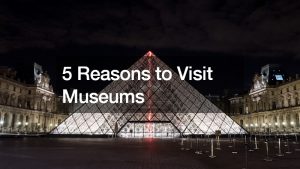• Utilizing social media platforms is a great way to promote your artwork and engage with potential customers.
• An online portfolio site allows you to showcase all your artwork in one place while giving potential buyers an easy way to browse your work.
• SEO can help improve visibility by including relevant keywords in titles and descriptions of related content.
• Consider giving out freebies such as postcards, posters, or digital downloads of your artwork to get people interested in what you have to offer.
With so much competition in the art world, standing out and promoting your work can be difficult. Thankfully, there are many ways in which technology can help you market yourself more effectively. Here are a few of the most effective tools and techniques for promoting your art online.
Social Media Platforms
One of the best ways to promote your art is through social media platforms like Instagram or Facebook. Not only do these platforms allow you to share pictures of your artwork with potential customers, but they also allow you to engage with other artists and potential customers who may be interested in what you have to offer.
When using social media for marketing purposes, it’s important to make sure that you use relevant hashtags or keywords so that people searching for art can easily find your posts. For instance, if you’re an oil painter, use hashtags like “oil painting” or “oil artist” to make sure your posts are seen by the right audience.
Additionally, don’t be afraid to engage with comments from potential customers. Responding promptly and professionally will show them that you care about their feedback and appreciate their interest in your work.

Online Portfolio Site
Having an online portfolio is essential if you want people to take your art seriously. An online portfolio site allows you to showcase all your artwork in one place and gives potential buyers an easy way to browse your available pieces. Here are things to consider when creating yours:
Choose The Best Platform
Plenty of portfolio sites are available, so choosing the one that best fits your needs is important. Consider factors such as cost, ease of use, and features to determine which one is right for you. You should also consider how much control you have over your portfolio’s look and feel.
Invest in a Good Website
Creating an attractive website is one of the most important steps in marketing your art. If you can’t make it yourself, web developers can create a customized site that perfectly fits your needs and showcases your art in the best possible light. Additionally, they will be able to optimize the website so it shows up higher on search engine results pages (SERPs) for relevant keywords related to your art.
Create Quality Visuals
Your online portfolio will be what potential customers see first, so make sure that it looks professional and appealing. Choose high-quality photos of your artwork to upload and keep them organized to let viewers easily browse through your collection. You should also include detailed descriptions of each piece so potential buyers can learn more about it.
Consider Giving Freebies
Giving out freebies such as postcards, posters, or even digital downloads of your artwork can be a great way to spread the word about your art. Not only will it get people interested in what you have to offer, but they’ll also be more likely to purchase from you if they already have something from you in their possession.

Search Engine Optimization (SEO)
SEO is a great way to ensure that more people discover your artwork when searching for something related on Google or Bing. By including relevant keywords in titles and descriptions on blog posts or other website content related to your artwork, SERPs will recognize those words and display links back to those pages when someone searches for them.
Additionally, SEO allows search engines to easily find images associated with specific keywords. This means more people will come across your artwork if they search for a keyword related to it.
SEO also helps improve visibility on social media platforms as well since these platforms also use algorithms powered by keywords and phrases when displaying content in users’ feeds. Therefore, mastering this strategy is a win-win for promoting your online and offline art.
Using technology to promote your artwork can be one of the most effective ways to draw attention to your work, increase sales, and build a successful art business. From creating an online portfolio site to harnessing the power of SEO, there are many tools and techniques that can help you get the exposure you need to succeed. Start exploring these options today and see how much of a difference they can make for your art career.







